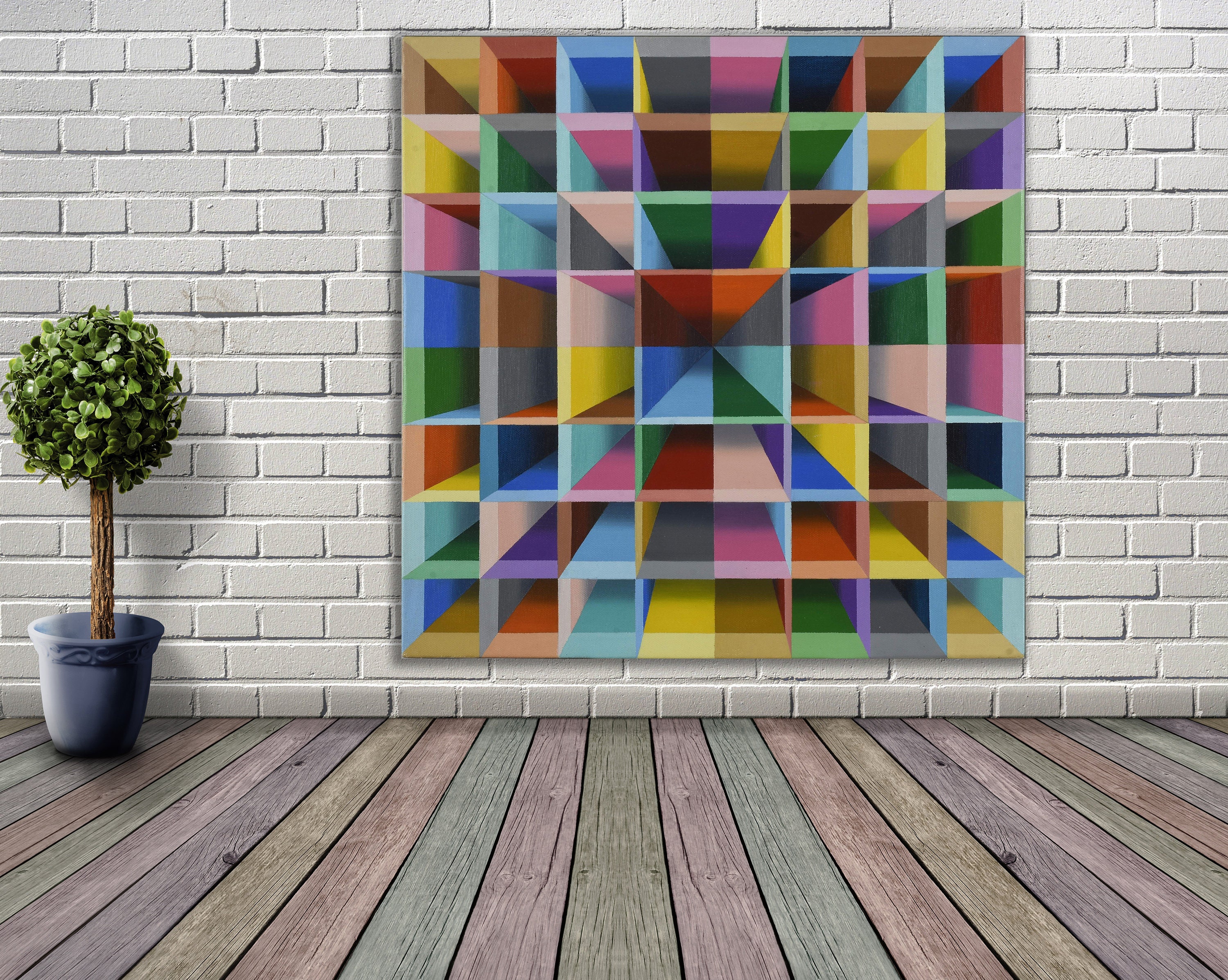Geometric Wall Art Patterns and Designs

Geometric wall art has gained popularity in recent years, offering a visually striking and contemporary way to decorate your home. These patterns and designs are characterized by the use of shapes, lines, and angles to create visually appealing and thought-provoking artwork.
Geometric wall art adds a touch of modern sophistication to any room, complementing the latest trends in aesthetic room decor. These eye-catching pieces feature bold lines, sharp angles, and vibrant colors, creating a dynamic focal point that elevates the ambiance of any space.
From abstract patterns to minimalist designs, geometric wall art offers a versatile way to express your personal style and create a truly unique aesthetic.
Geometric wall art can range from simple and minimalist designs to complex and intricate patterns. Some of the most popular geometric patterns include:
- Stripes: Vertical or horizontal lines that can create a sense of movement or rhythm.
- Checks: Intersecting lines that form squares or rectangles, creating a classic and versatile pattern.
- Chevron: Zigzag lines that can add a playful or dynamic touch to a space.
li>Hexagons: Six-sided shapes that can be arranged in various patterns to create a modern and sophisticated look.
Geometric wall art can be created using various materials, including paint, wallpaper, tile, and fabric. It can be used to create a focal point in a room or to add a touch of style to any space. Whether you prefer modern, abstract, or minimalist designs, there is a geometric wall art pattern or design that will suit your taste.
Color Palettes and Materials for Geometric Wall Art

Color palettes and materials play a crucial role in shaping the overall look and feel of geometric wall art. The choice of colors can evoke different emotions and create a specific ambiance in a space, while the materials used can impact the durability, texture, and visual appeal of the artwork.
Color Palettes
Geometric wall art often employs a variety of color palettes, each with its unique characteristics:
- Neutral Palette: Consisting of shades like black, white, and gray, neutral palettes offer a timeless and sophisticated look. They create a sense of balance and can complement various interior styles.
- Monochromatic Palette: Utilizes different shades and tints of a single color, creating a harmonious and cohesive effect. Monochromatic palettes can range from subtle and elegant to bold and dramatic.
- Analogous Palette: Employs colors that are adjacent to each other on the color wheel, resulting in a natural and visually pleasing harmony. Analogous palettes can evoke a sense of tranquility or energy, depending on the specific colors chosen.
- Complementary Palette: Pairs colors that are opposite each other on the color wheel, creating a high-contrast and visually striking effect. Complementary palettes can add a sense of vibrancy and excitement to a space.
Materials
The choice of materials for geometric wall art can impact its durability, texture, and overall appearance:
- Canvas: A versatile material that provides a smooth and even surface for painting or printing. Canvas wall art is lightweight and relatively affordable, making it a popular choice for both home and commercial settings.
- Wood: Offers a natural and organic look, adding warmth and texture to a space. Wooden wall art can be painted, stained, or left in its natural state, providing a range of aesthetic options.
- Metal: Known for its durability and sleek appearance, metal wall art can create a modern and industrial vibe. Metal can be painted, polished, or left with its original finish, offering a variety of textures and styles.
Techniques for Creating Geometric Wall Art

Creating geometric wall art involves a combination of precise measurements, careful planning, and artistic flair. Here are step-by-step instructions on how to create stunning geometric patterns using various techniques.
Using Rulers and Protractors
- Plan your design on paper, sketching out the shapes and dimensions.
- Transfer the design onto the wall using a ruler and pencil, ensuring straight lines and accurate angles.
- Use a protractor to mark angles and curves, creating a precise framework for your geometric shapes.
Using Masking Tape
- Start by creating a grid or pattern on the wall using masking tape, forming the Artikels of your geometric shapes.
- Fill in the shapes with paint, ensuring the edges are clean and crisp by following the tape lines.
- Once the paint is dry, carefully remove the masking tape to reveal the geometric design.
Using Stencils, Geometric wall art
- Select stencils with geometric patterns that complement your design.
- Secure the stencil to the wall and apply paint using a sponge or brush.
- Move the stencil and repeat the process until the entire wall is covered with the desired geometric pattern.
Tips for Achieving Precision and Clean Lines
- Use sharp tools and equipment to ensure clean cuts and precise measurements.
- Plan the design carefully, considering the scale and proportions of the geometric shapes.
- Practice on a separate surface before transferring the design onto the wall.
- Allow the paint to dry completely before removing any masking tape or stencils to prevent smudging.
Geometric wall art, with its clean lines and bold shapes, can add a touch of modern flair to any bathroom. Whether you’re looking for a subtle accent or a statement piece, there’s a geometric wall art design that will complement your farmhouse bathroom decor.
From abstract prints to metallic sculptures, geometric wall art can add a touch of sophistication to your space while keeping it feeling fresh and inviting.